In Missouri, invasive plants don’t just affect native plants and wildlife. Many people in Missouri make a living from the land, and invasive plants can degrade pastures, choke out oak and hickory trees, and cause harm to waterways. This impacts farming, forestry, and outdoor recreation, touching the lives of nearly everyone in the state.
But just as invasive plants in Missouri impact you, you can make an impact on invasive plants. Many of these weeds masquerade as garden plants, having been introduced as ornamentals. You can choose to remove such plants from your landscape and be intentional about not introducing any others — some invasive plants are still sold in nurseries and garden centers!
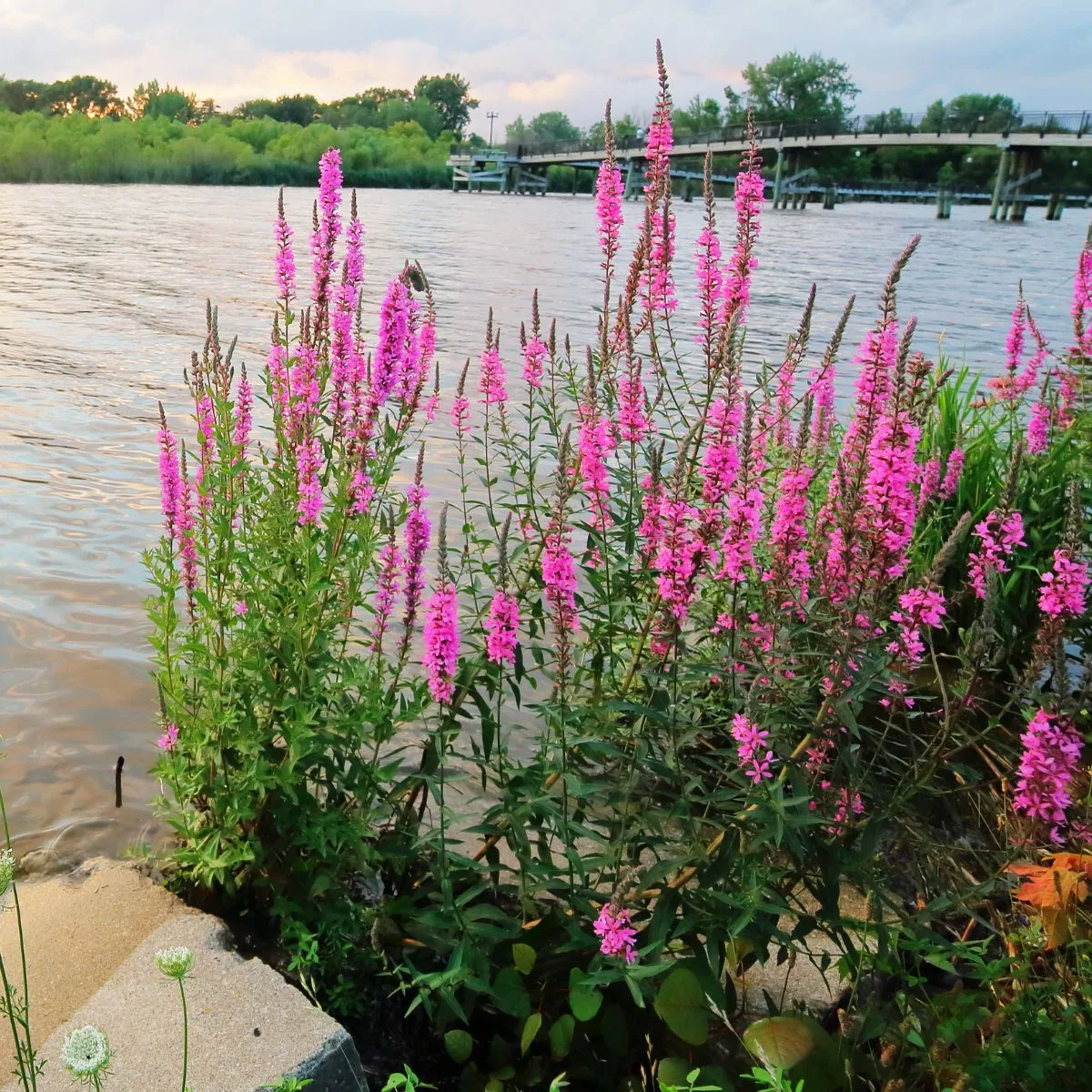
So what can you plant? Most garden plants do not spread aggressively and are not considered invasive species. The best options, though, are native plants, which support native wildlife like butterflies and songbirds. Each description of invasive plants below includes similar native plants you can grow instead.
Invasive Plants in Missouri
If you find any of the following plants on your property, contact your local Extension office to learn how to properly remove the invasive species. Oftentimes, just cutting them down or pulling them out won’t do the trick.
1. Autumn olive (Elaeagnus umbellata)
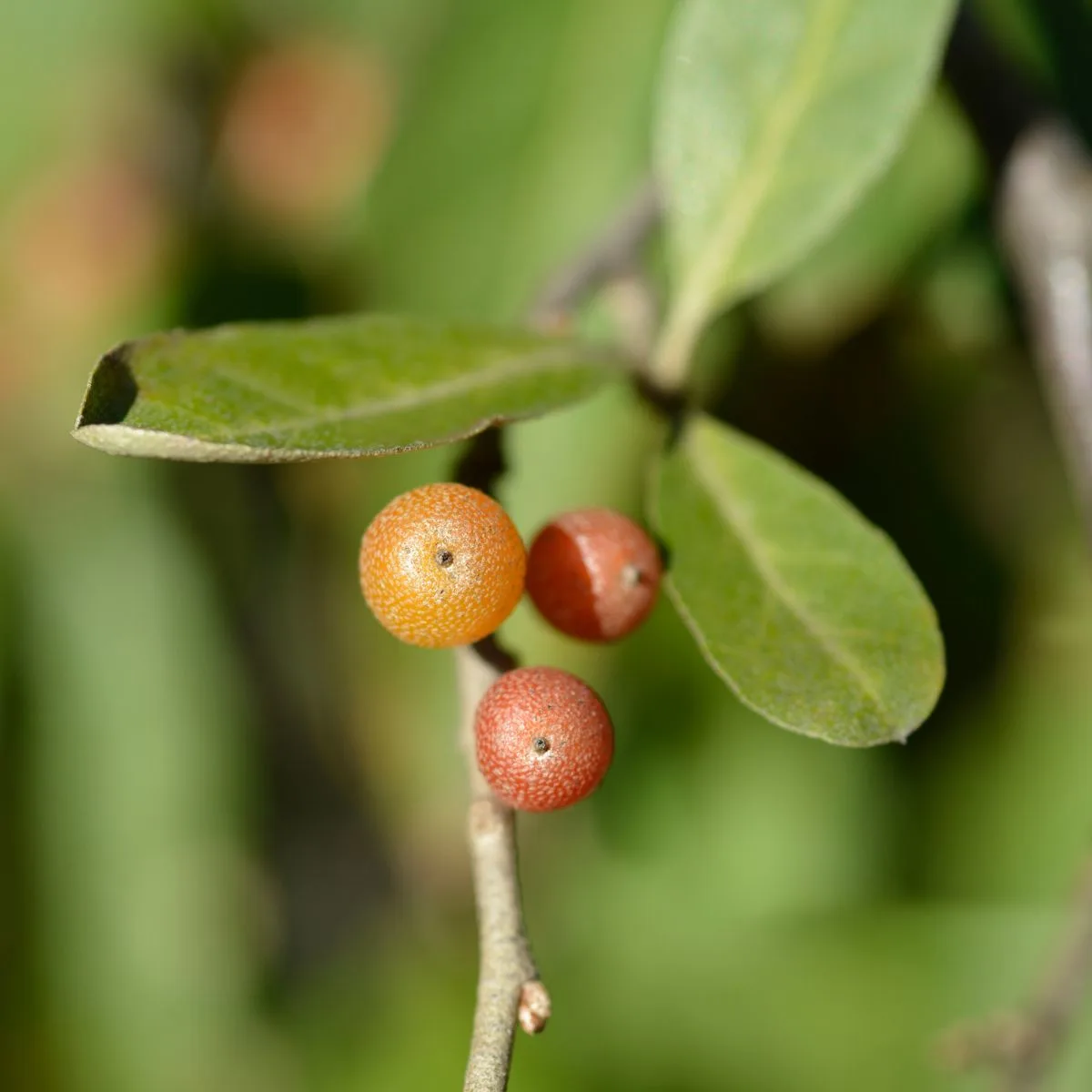
A fast-growing deciduous shrub, autumn olive can grow to 20 feet tall. It thrives in poor soils and spreads quickly via birds eating the abundant fruits. Its dark green, alternate, oval leaves have smooth, wavy margins and silvery scales on the undersides, and its yellow flowers bloom in April and May. Small, red berries follow, dotted with pale speckles.
Native wild plum (Prunus americana) and spicebush (Lindera benzoin) both have a very similar appearance and produce edible fruit.
2. Bush honeysuckles (Lonicera spp.)
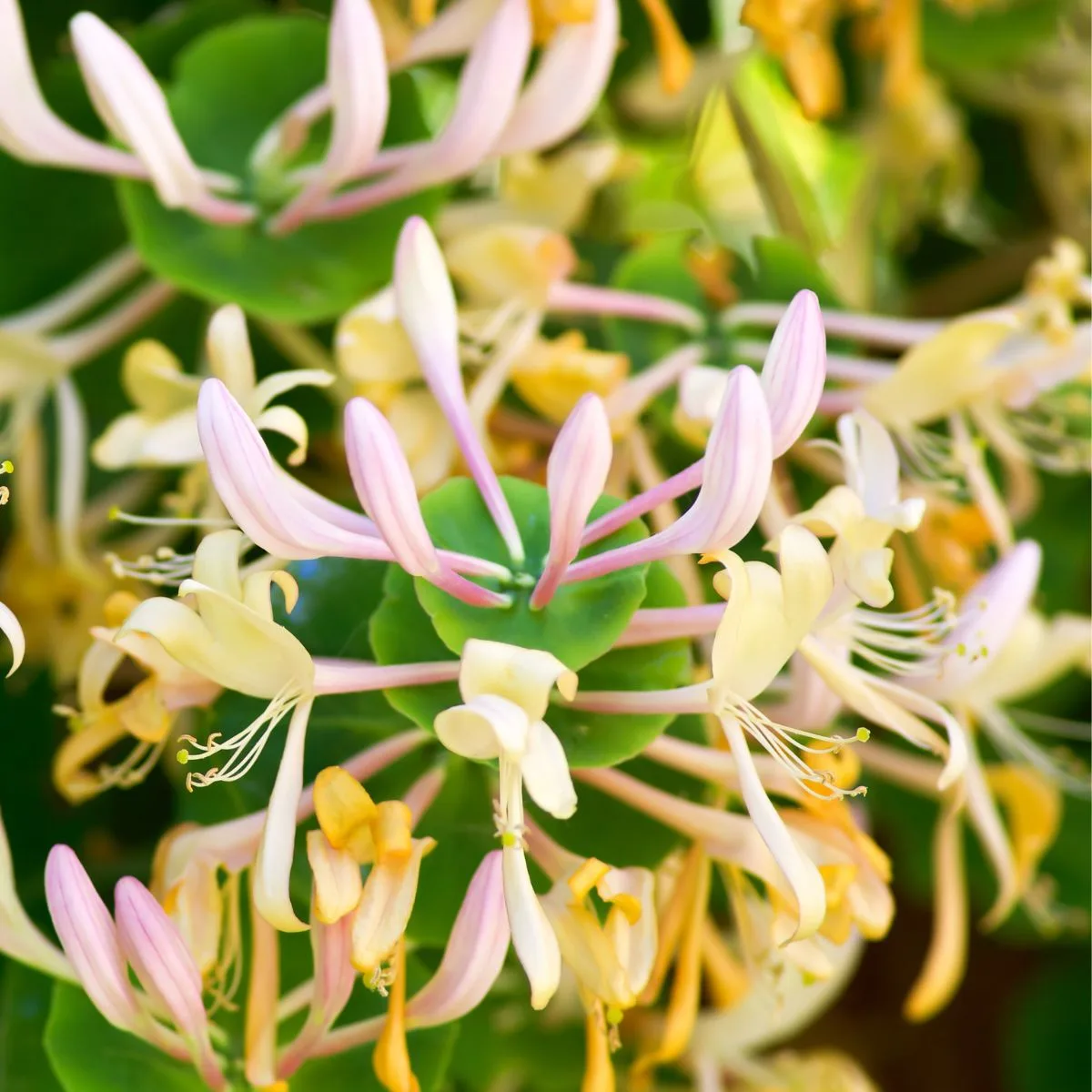
Four species of bush honeysuckles are considered invasive in Missouri: Morrow’s (L. morrowii), Amur (L. maackii), Bell’s (L. x bella), and Tartarian (L. tartarica). While they vary in size, all have opposite, elliptical leaves and hollow mature twigs. The sweetly fragrant, tubular flowers bloom in spring in white or pale pink, fading to yellow. Red berries appear in early fall.
Similar native shrubs include golden currant (Ribes aureum), with its fragrant yellow blooms, and gray dogwood (Cornus racemosa).
3. Callery pear (Pyrus calleryana)
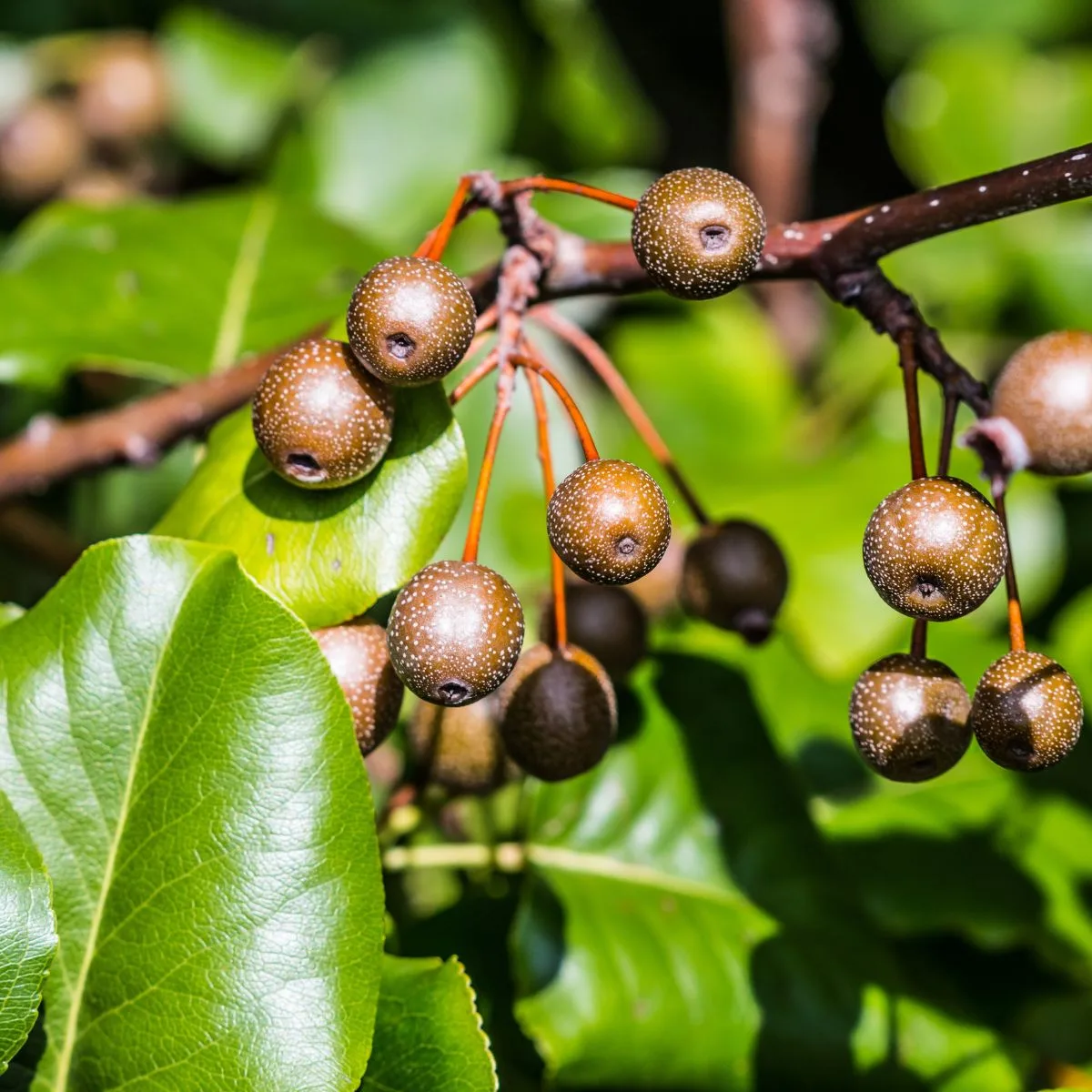
Also called Bradford pear, Callery pear is a fast-growing, small- to medium-sized deciduous tree. Look for glossy, dark green, alternate leaves with wavy, slightly serrated edges. Masses of small white flowers bloom in early spring and give off an unpleasant odor. Tiny, round, brownish fruits follow.
Plant native trees instead, such as flowering dogwood (Cornus florida) or hawthorn (Crataegus spp.).
4. Common reed (Phragmites australis subsp. australis)
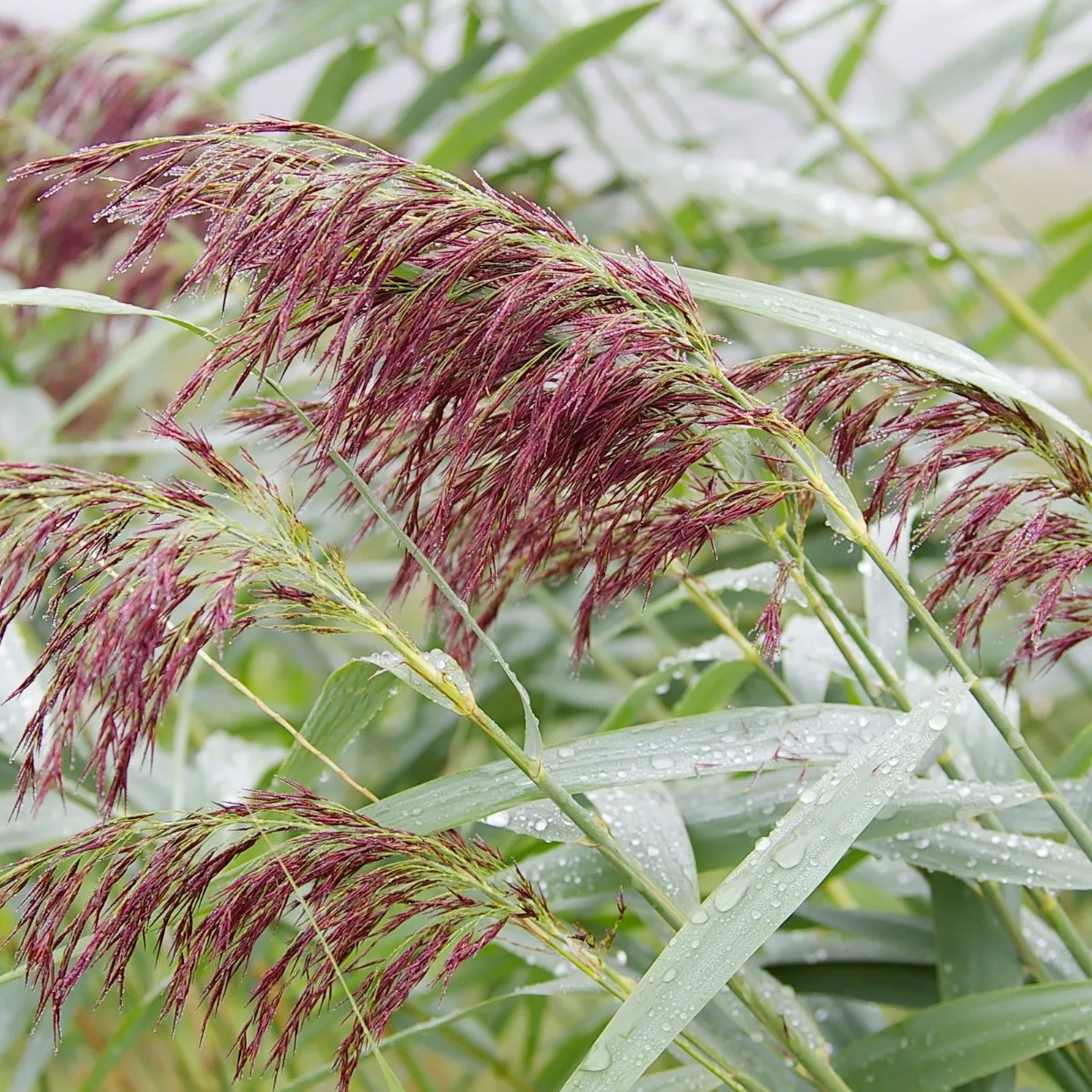
A perennial wetland grass, common reed has both an invasive subspecies and a native subspecies (P. australis subsp. americanus). The invasive European common reed grows up to 15 feet high with tall, hollow stems and long, flat leaves that spread out widely. The leaves have rough margins and fine tips, as well as dense, stiff hairs where they join the stem. Large, plume-like panicles of tawny, purplish flowers with long, silky hairs bloom in midsummer.
Native common reed (P. australis subsp. americanus) has lighter, yellow-green leaves and reddish stems. Northern sea oats (Chasmanthium latifolium) also makes a nice alternative.
5. Garlic mustard (Alliaria petiolata)
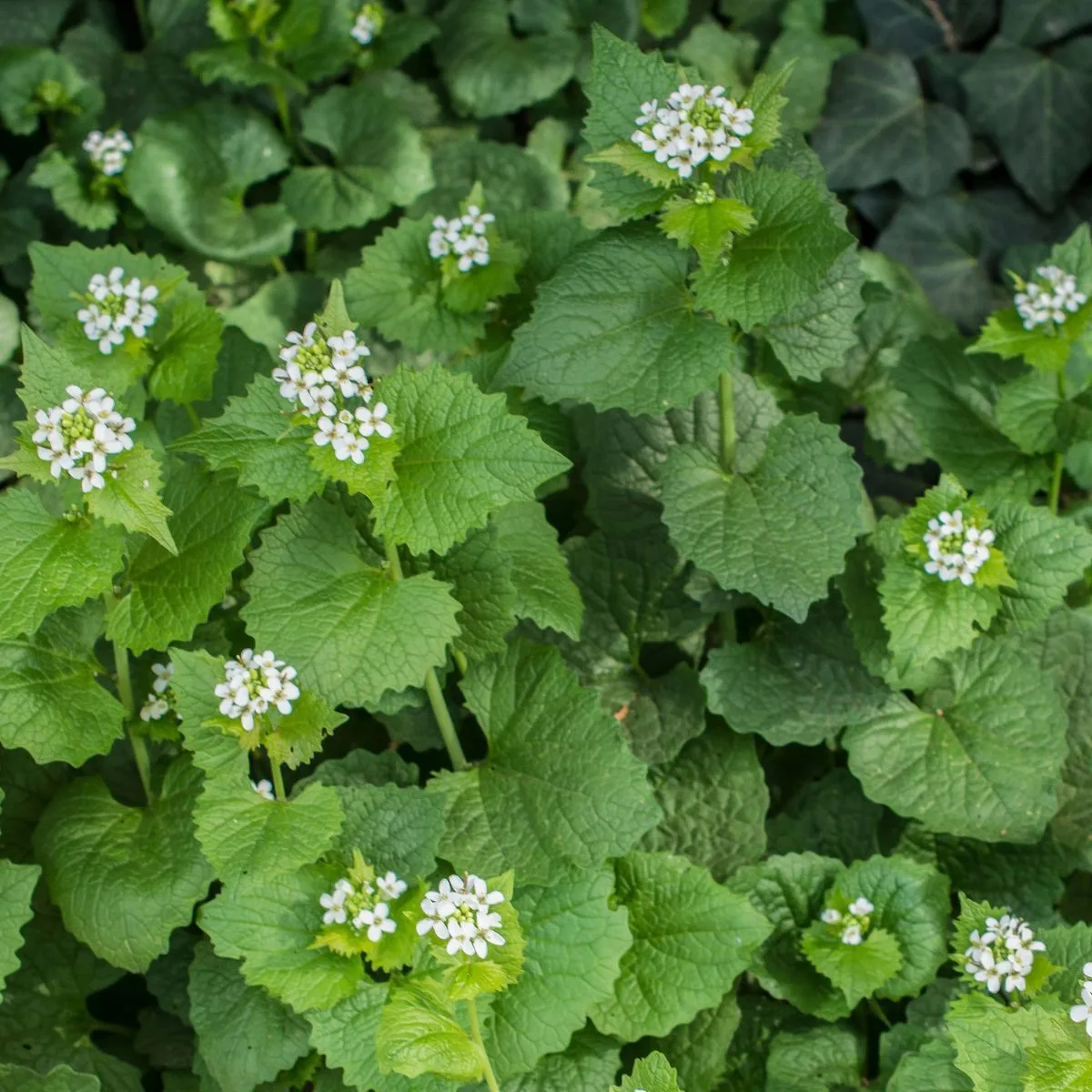
Garlic mustard is an herbaceous biennial that begins as a rosette of kidney-shaped leaves with coarsely toothed margins and grows up to four feet tall in its second year. Mature plants typically send up one flowering stalk, topped with a cluster of tiny white flowers in late spring. When crushed, the leaves and stems give off a strong garlicky aroma.
Grow native woodland plants instead, like wild sweet William (Phlox divaricata) or Solomon’s seal (Polygonatum biflorum).
6. Japanese honeysuckle (Lonicera japonica)
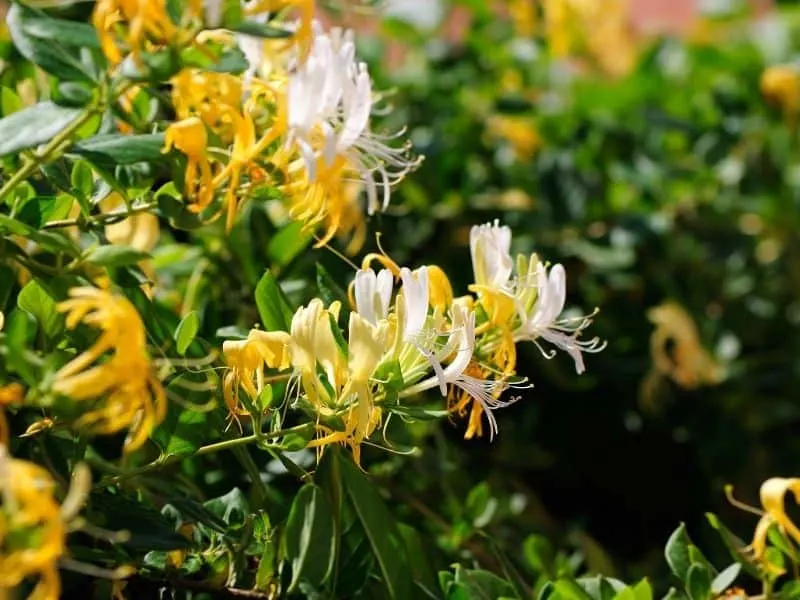
A semi-evergreen vine, Japanese honeysuckle forms dense mats on the ground, climbs shrubs and trees, and can grow to dominate tree canopies. Its sweetly fragrant, white to yellow, tubular flowers bloom at the leaf axils from May to June. Small, round, purplish-black berries follow.
Plant native yellow honeysuckle (L. flava) or grape honeysuckle (L. reticulata), which have terminal flowers and reddish or orangish berries, instead.
7. Japanese hop (Humulus japonicus)
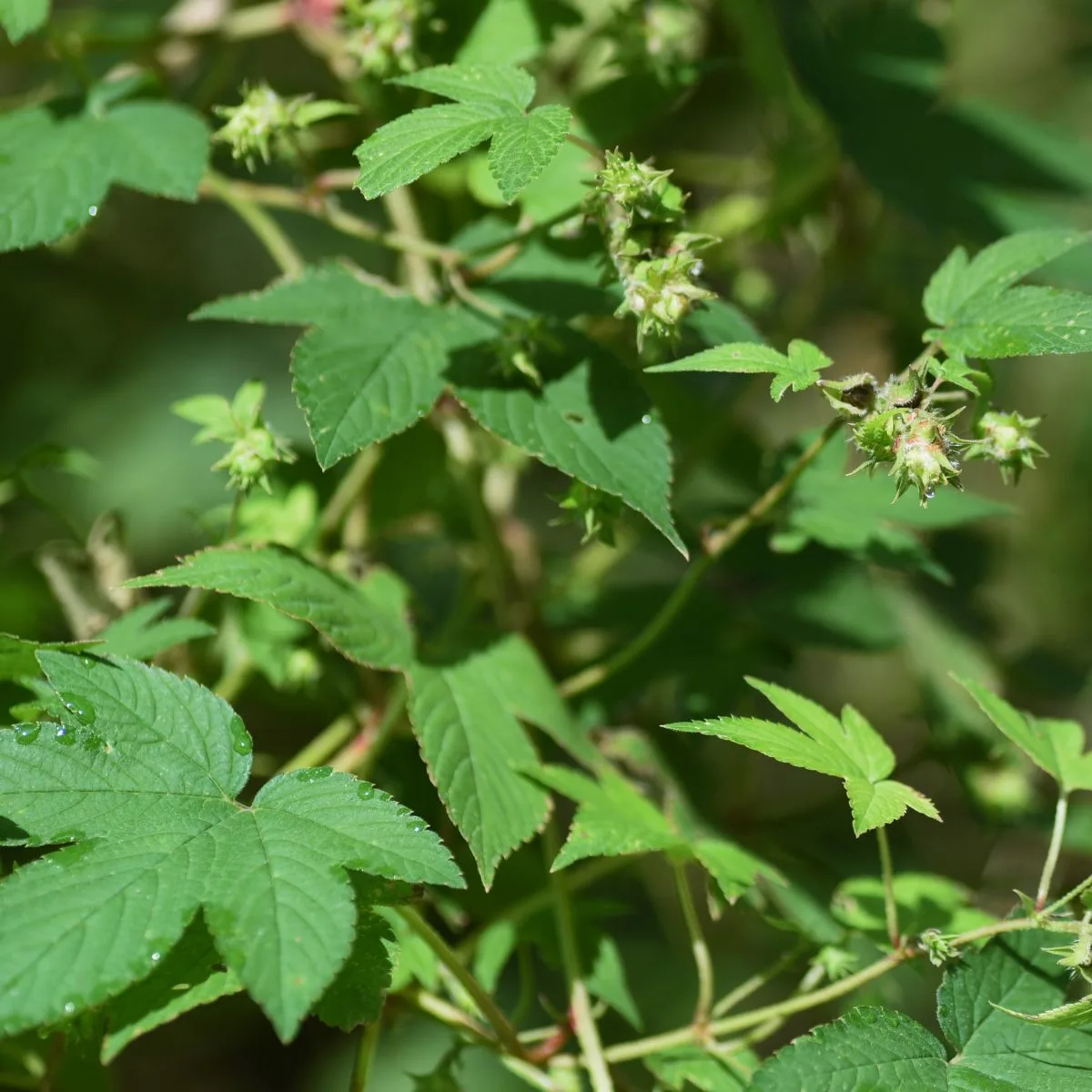
Japanese hop, an herbaceous, annual vine, typically grows in exposed, moist soil and direct sunlight. This sprawling and climbing vine has short, downward-pointing spines on the stems and rough, palmate leaves with five to seven lobes. Its inconspicuous green flowers are followed by tiny, mottled brown seeds.
Similar native vines include bur cucumber (Sicyos angulatus) and Virginia creeper (Parthenocissus quinquefolia), both of which lack prickles.
8. Japanese knotweed (Fallopia japonica)
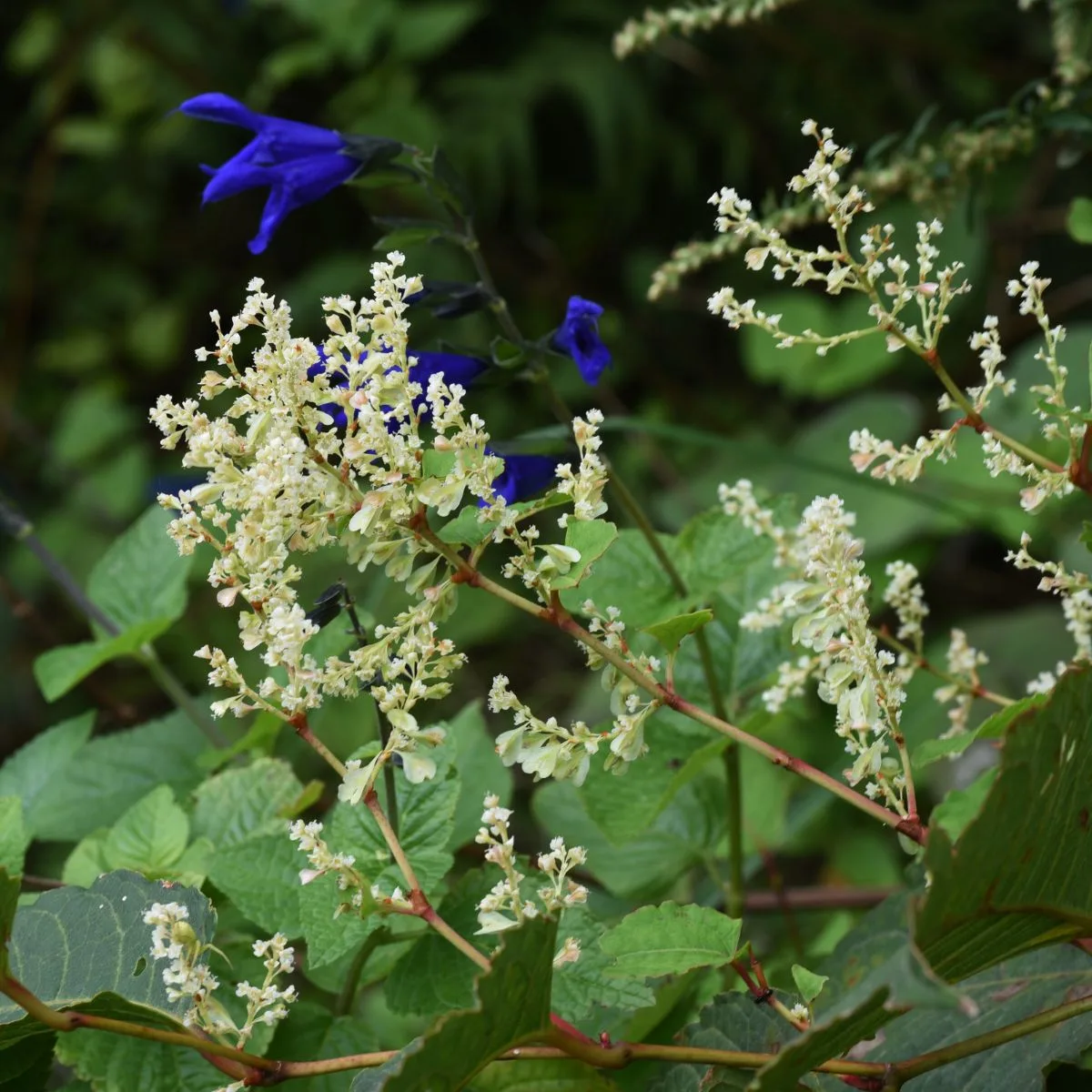
An herbaceous perennial, Japanese knotweed tolerates a range of conditions and spreads via vigorous rhizomes, quickly forming dense thickets. This three- to 12-foot-tall, shrub-like plant features heart-shaped leaves and reddish, hollow, jointed stems that resemble bamboo. White flower spikes bloom in midsummer, followed by winged seeds in September.
Native alternatives include goat’s beard (Aruncus dioicus) and black cohosh (Actaea racemosa).
9. Japanese stiltgrass (Microstegium vimineum)
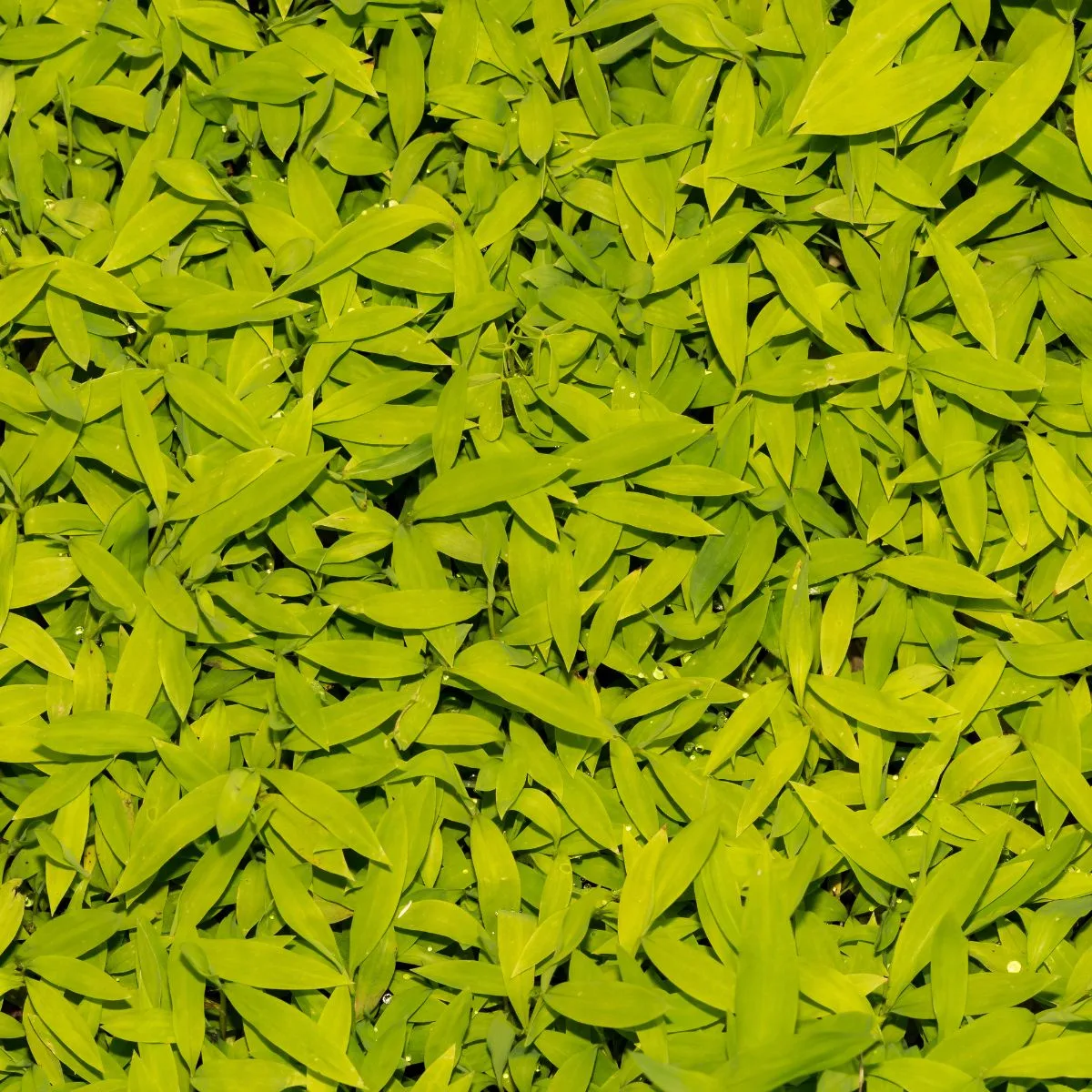
Japanese stiltgrass is an annual grass with alternate, pale green, lance-shaped, three-inch leaves that give it a somewhat bamboolike appearance. This sprawling grass grows up to three and half feet tall, and each leaf has a distinctive silvery midrib. Flower spikes form in late summer, followed by numerous small, yellow to red seeds.
Native white grass (Leersia virginica) has a similar appearance, and many other native grasses can serve as an alternative as well, such as blue grama grass (Bouteloua gracilis).
10. Johnson grass (Sorghum halepense)
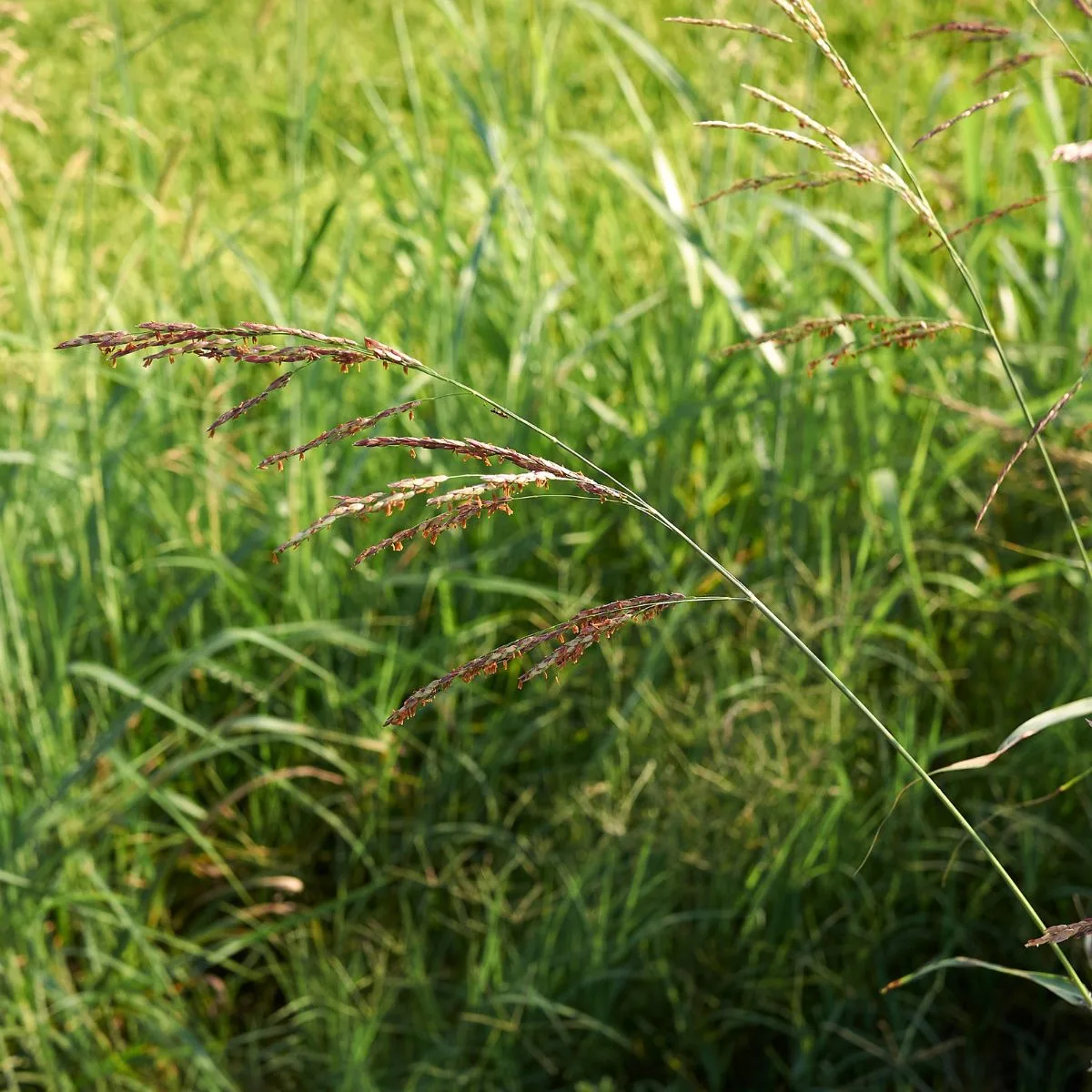
Johnson grass is a tall perennial grass that forms dense stands and spreads via stout rhizomes. It has smooth, six- to 20-inch leaves with pale midveins, and the stems are pink to rusty at the base. Large, purplish, loosely branched panicles bloom June through November, with the spikelets appearing in twos or threes.
Learn how to get rid of Johnson grass.
Plant native gama grass (Tripsacum dactyloides) or silver plume grass (Erianthus alopecuroides) instead.
11. Reed canary grass (Phalaris arundinacea)
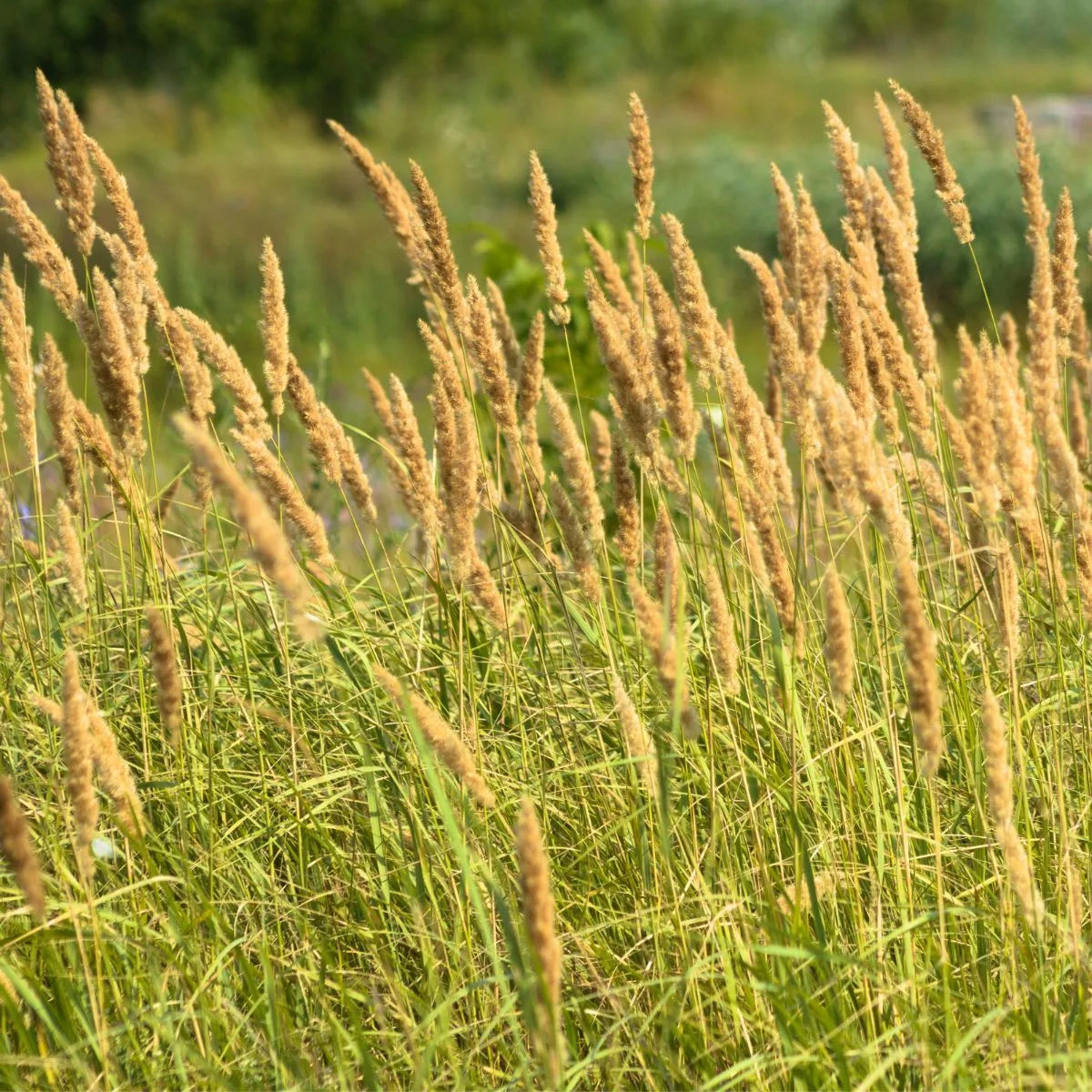
Reed canary grass is a cool-season perennial that grows in wetland areas and spreads through rhizomes to form colonies. Its erect, hairless stems have rough, flat, narrow leaf blades that gradually taper. In early spring, dense, compact flower spikes emerge, reaching three to 16 inches long. Seed heads of shiny brown seeds ripen in midsummer, shattering when fully ripe.
Native bluejoint grass (Calamagrostis canadensis) has a similar appearance, and Bicknell’s sedge (Carex bicknellii) also does well in wet soils.
12. Sericea lespedeza (Lespedeza cuneata)
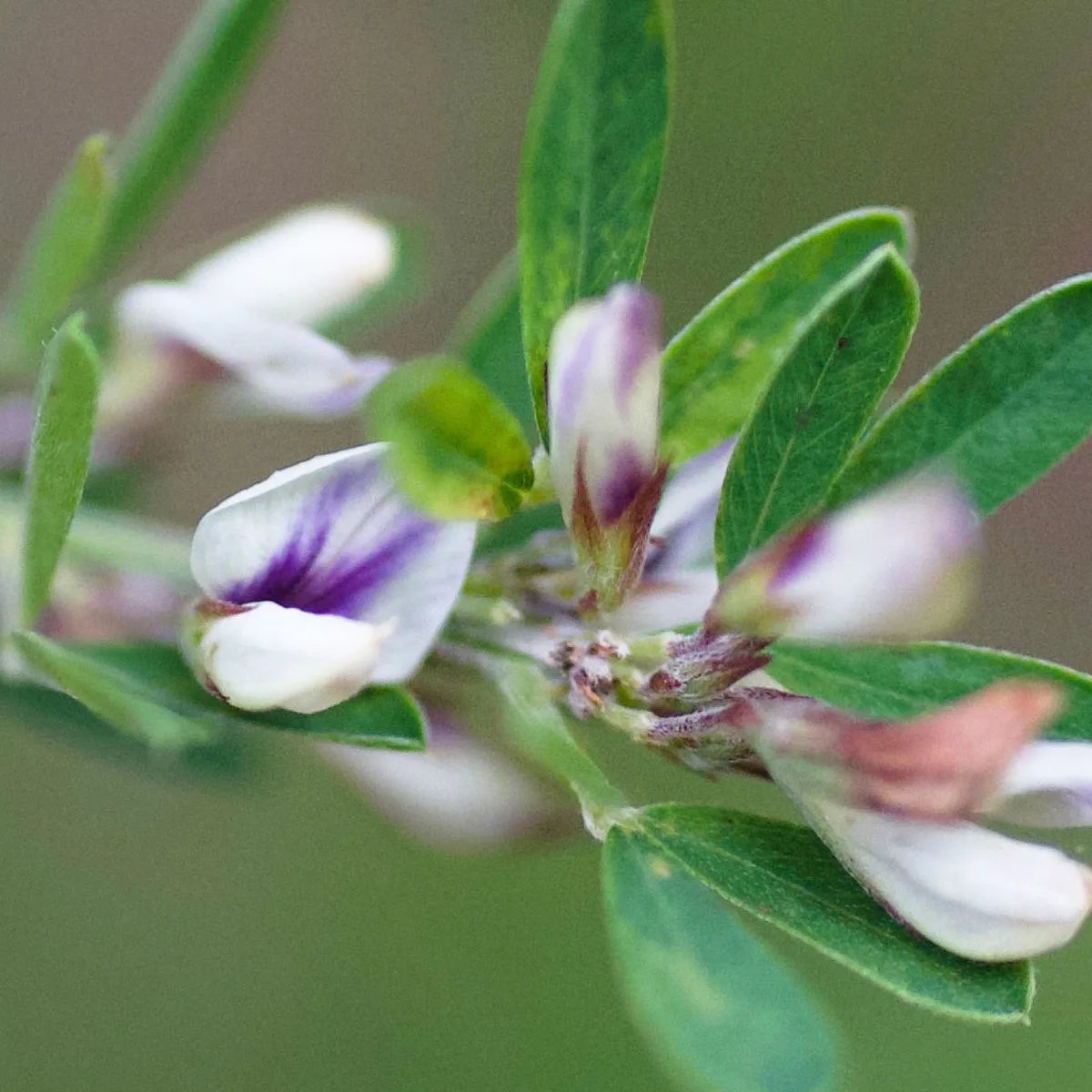
A warm-season perennial legume, sericea lespedeza in stands along roadways. It has leafy, erect, herbaceous to somewhat woody stems ranging from three to six feet tall. The small compound leaves have three leaflets each one-quarter to one inch long. Clusters of two or three tiny cream flowers with purplish markings bloom in the upper leaf axils in late summer.
Plant native slender lespedeza (L. virginica) instead, or choose another similar plant, like blue wild indigo (Baptista australis).
These are just a few of the many invasive plants in Missouri. Here are a few more:
- multiflora rose ( (Rosa multiflora) )
- crown vetch (Securigera varia)
- Canada thistle (Cirsium arvense)
- musk thistle (Carduus nutans)
- leafy spurge (Euphorbia esula)
- purple loosestrife (Lythrum salicaria)
- common teasel (Dipsacus follonum) and cut-leaved teasel (D. laciniatus)
- white sweet clover (Melilotus albus) and yellow sweet clover (M. officionale)
Now that you know some of the top invasive plants in Missouri, you can keep an eye out for them and make an impact by simply replacing the harmful plant with a beautiful native species!
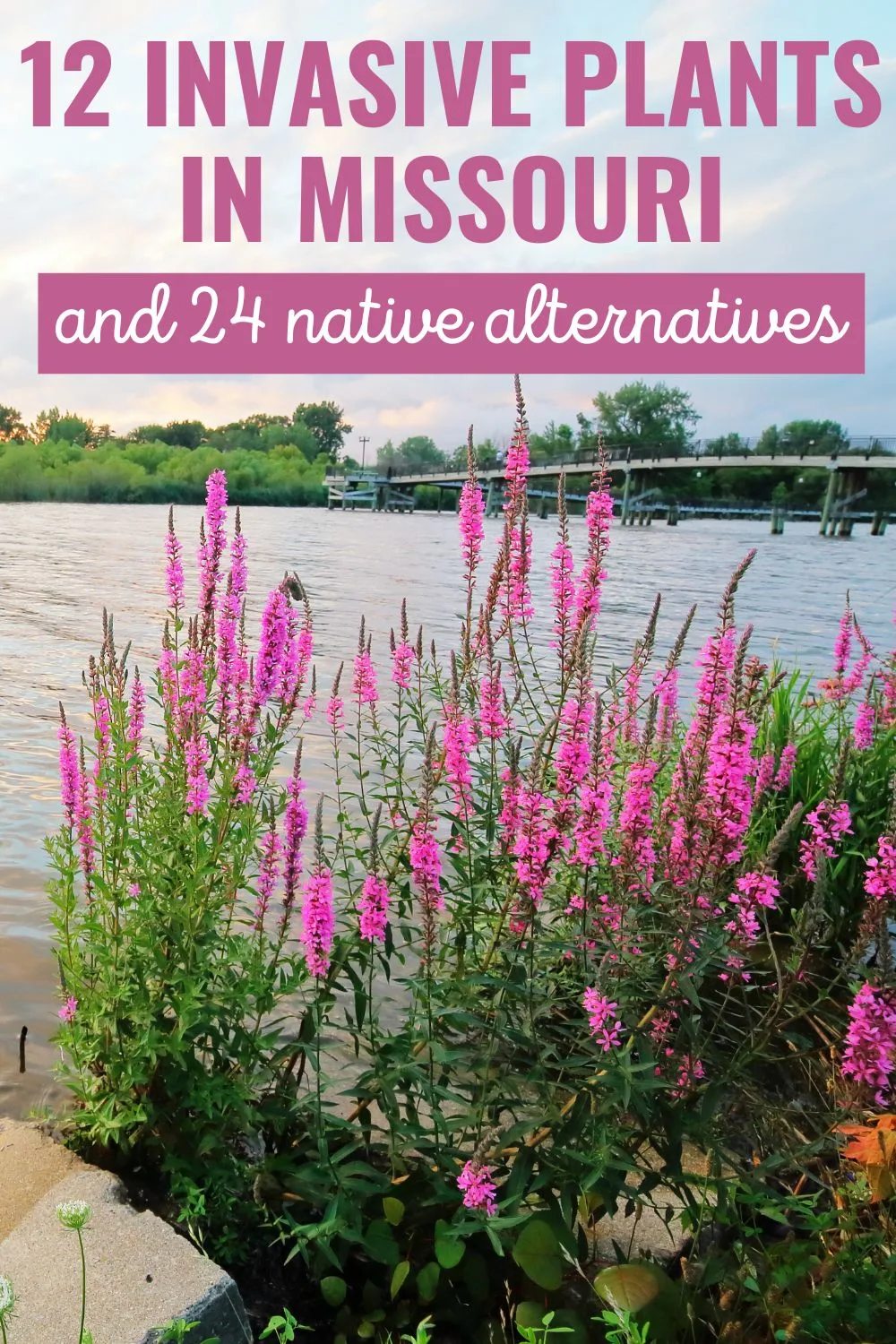





![Greenwood Nursery/Live Indoor House- Plants - Blue Moon Woodland Creeping Phlox + Divaricata - [Qty: 2X Pint Pots] - (Click for More Options/Quantities) Greenwood Nursery/Live Indoor House- Plants - Blue Moon Woodland Creeping Phlox + Divaricata - [Qty: 2X Pint Pots] - (Click for More Options/Quantities)](https://m.media-amazon.com/images/I/51lKTg2Kq0L._SL500_.jpg)






Missouri Native Plants List: 15 Amazing Wildflowers
Tuesday 27th of June 2023
[…] at 15 amazing wildflowers that just so happen to be native to the state. If you have any of these Missouri invasive species, replace them with one or more o the plants […]